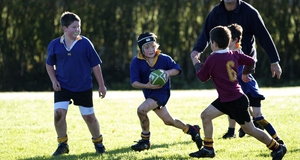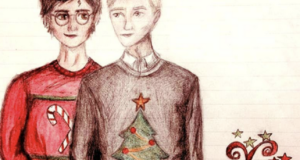Coming Out and the Transition to Adulthood in LGBQ Youth
By
2016, Vol. 8 No. 04 | pg. 2/2 | « DiscussionSocio-Cultural and Sexual Environment
Findings of this study that relate to the theme of supportive socio-cultural environments confirm what much sociological and psychological research asserts: the level of social support from peers and parents at the time of a youth’s coming out heavily influences how the youth and their family adjust and cope with this change in public identity (Saltzburg, 2009.) In Lucy and Amel’s stories, where parental support and acceptance was expressed clearly and immediately upon their coming out, “a sense of optimism and resilience,” as Saltzburg 2009 puts it, seems to follow. Lucy was able to embrace and ‘own’ her sexuality with more confidence after having vocally identified it to her mom, while Amel gained reassurance that her parents were first and foremost on her side, not on the side of their relatively conservative culture. Conversely for Angela, her mother’s negative and largely disbelieving reaction to her coming out led to a mourning of their relationship instead of a rejuvenation of it, as coming out did for the other two interviewees. Parental support becomes even more important for the well-being of youth like Angela when considering its impact on health-related outcomes. A lack of parental and social support for LGB youth seems to be correlated with worse health related outcomes, such as more depressive and suicidal thoughts and heavier drinking habits (Needham et. al., 2010.)A lack of parental and social support for LGB youth seems to be correlated with worse health related outcomes Looking at each interviewee’s story more carefully also reveals a relation between parental support after a youth’s coming out and the closing in of the distance between parent and child that may have existed before coming out. The two sides of this relation can be seen in Amel and Angela’s examples. Both women started out their process of coming out with considerable anxiety, and both wrote letters to relevant family members rather than coming out to them in person, which seems to indicate a desire to distance themselves from those family members. Yet Angela’s coming out and her mother’s subsequent and explicit struggle to come to terms with Angela’s sexuality only maintained the distance they’d shared before her coming-out, while Amel reported an improvement in her relationship with her parents, and more conversations with them after the event. It is possible that Angela’s mother had such a strong reaction to her daughter’s revelation not just because her sexuality challenged her mother’s beliefs, but also because her coming-out meant that her mother, a somewhat religious Jewish woman, would be different among her own peer group—another potential reason, other than the ‘loss’ of her heretofore straight child, to feel isolated (Saltzburg, 2009.) Despite many of the findings falling in line with those of the existing research, there were some findings on this theme that are not specifically addressed in the literature. Firstly, the letter-writing aspect of Amel and Angela’s processes is one of the most interesting observations to come out of the interviews. As mentioned earlier, it seems to signify a desire for (or perhaps is a manifestation of the already-existing) distance between themselves and their respective family member. Also, due to the more nuanced nature of writing (compared to a spontaneous conversation) it is a way to elicit a response from the family member that is hopefully less reactionary than a response given during a conversation, one that the parent or sibling has had time to construct after reasoning with the situation at hand. The forethought that went into these two letters combined with the apprehension Angela and Amel felt before coming out, seems to suggest that previous experiences with their family had led them to believe that their parents’ support (or love) for them was in some way conditional rather than unconditional. These participants may not have felt that they had a constant ‘net’ of support to fall back on in times of need. Yet Lucy did not really need to think twice before coming out to her mother, and did not doubt that she would be supported by her parents regardless of whether or not they were internally struggling with this change. While current research seems to focus on social and familial support from the point of coming-out onward, it would be valuable to further study the development (or lack thereof) ofthese ‘nets’ of social support in LGBQ families, and their consequent effects on the period preceding a youth’s coming out. Since this period seems to be fraught with tension and stress for many LGBQ youth even if their parents are known to be accepting of non-straight identities (such as Amel’s) investigating concrete expressions and conveyance of unconditional support throughout childhood and adolescence of LGBQ youth could help identify strategies that can be used in later stages to alleviate some of this stress. Another unexplored trend that appears in the interviews is the possible connection between acquiring the language to describe one’s sexuality in later educational stages and the likelihood of sexual identity experimentation as a young adult. Both Lucy and Amel, who became familiar with LGBTQ discourse in high school and college respectively, reported that before that they did not know how to explain or label their non-straight feelings. They both went on to say that the label they ascribe to their sexuality has changed over time from bisexual, to queer, lesbian, pansexual, etc., and both went through phases in college where their sexual orientations were nebulous. Angela, on the other hand, has always identified as lesbian, and has been strictly involved with women. She attributed this label to her identity in middle school, long before coming out or being exposed to an open sexual environment. Interdependence, Responsibility, and AdulthoodThe findings on the theme of responsibility and interdependence strongly suggest two important points: first, interdependence is seen as a vital form of responsibility by all three interviewees; and second, interdependence often, but not always, exists as an important subjective marker of adulthood within the parameters of more traditional relational markers of adulthood (such as getting married, having kids, and getting a job). By interdependence, the interviewees seem to imply two concepts: a give-and-take relationship in which one is aware of their role and responsibilities within the relationship, is attuned to the other’s emotional and social needs, and is able to act to maintain the equilibrium of the relationship, as well as a responsibility for others or for issues that affect others. This is why both romantic/platonic relationships and parent-child relationships can be interdependent. The participants’ collective identification of interdependence as an important step towards adulthood reflects the responses of the women in Edin and Kefalas’ study about young, poor, single mothers. Responsibility in these contexts is less about self-related tasks like being able to manage a bank account or daily chores, but rather is about being able to put someone else’s emotional, social, and sometime physical needs before your own. Responsibility is most importantly about being able to put someone else’s emotional, social, and sometimes physical needs before your own It is why the women in Edin and Kefalas’ book choose to assume the role of a parent while knowing that they have not yet ‘settled down’ and are not financially stable: because despite the lack of this material independence, they know that achieving adult status involves the realization that people need to depend on others for their own wellbeing and maturation, and that their children will eventually be a source of the maturation they need to achieve other markers of adulthood. Similarly, the interviewees of this study seem to imply that a prerequisite for adulthood is being able to maintain interdependent relationships, i.e., being able to put others’ needs first, and vice versa. What is also interesting about both Edin and Kefalas’ participants and the three participants in this study is that they do not explicitly couple interdependence with traditional markers of adulthood, though sometimes they occur together anyway. There seems to be a decoupling of objective markers like getting a job and getting married from being able to take part in interdependence. Just as Shanahan et. al. (2004) points out, the young adults profiled here do not see the need to first enter into a traditionally marked phase in order to gain access to the more abstract consequences of that phase (like dealing with interdependence.) They are dismantling the normative timeline of the transition to adulthood that has been in place for much of the 20th century, while still acknowledging the ongoing validity of traditional markers themselves (like having a child, in Lucy’s case). In other words, some may find that they obtain their adult status through interdependent relationships that are not marriage and parenting (through jobs, friends, mentoring, etc.,) while for others, these non-traditional sources of interdependence may be seen as a period of training, where they learn to wield the tool of ‘interdependence’ that is necessary in traditional roles of the transition to adulthood (the phases in which this set of people will acquire adult status). It is also important to note that due to the class difference between the participants in this study and those in Edin and Kefalas’, it is possible that Lucy, Angela, and Amel’s choice to participate in interdependence was enabled by having reached a certain level of financial independence, while the single mothers’ choice of interdependence was more of an obligation, encouraged by their relative class disempowerment. The diversity of relationships in which the three participants reported utilizing interdependence and consequently feeling like an adult, such as parental, romantic, professional, and friend relationships, contradicts McNamara et. al. (2009) which found that participants validate a feeling of ‘achieved adulthood’ in relation to platonic friendships just as much as they validate achieving adulthood through romantic relationships. Of course the sample size of this study does not serve to discredit McNamara et. al., but this topic may be worth studying in the future, especially considering that there are many people who do not want to or will not enter into romantic relationships. As a result, emphasizing that those are the sorts of relationships through which one becomes an adult could leave this subsection of the population feeling alienated. Lastly, the participants’ focus on ‘giving back’ in interdependent relationships is reminiscent of the generativity stage of Erik Erikson’s psychological life cycle construct. The participants highlight a need to give to their relationships as much as they get from them (in many ways the hallmark of interdependence) and in this sense contribute to their localized, small-scale societies. Yet Erikson’s stage of generativity, characterized by much the same desire to give back to society, is allocated to people of middle age, while those in the age group of the three participants are characterized by a desire to avoid isolation and be in intimate relationships (Cramer et. al., 1997). From what has been discussed in much of the analysis of the interviews, these two traits—wanting to give back and wanting to be in intimate relationships—seem to often coincide, to the extent that perhaps Erikson’s definitions of the two stages should be collapsed into one. Part of being in a functioning intimate relationship itself is being ‘generative’ and giving back: youth in the transition to adulthood are therefore practicing both of these stages simultaneously. This suggests that the order, rigidity, and generality of Erikson’s stages would benefit from comprehensive restructuring or expansion of the type Slater (2003) proposes—one that addresses the discrepancies between the theory of psychosocial stages and how these stages are shown to actually manifest in studies of real life. ReferencesCramer, C., Flynn, B., & Lafave, A., (1997). Stage 7: Middle Adulthood. Retrieved December 10, 2015, From Http://web.cortland.edu/andersmd/erik/stage7.html Edin, K., & Kefalas, M.. (2011). Promises I Can Keep: Why Poor Women Put Motherhood Before Marriage (3Rd Ed.). University Of California Press: 7-18. Erikson, Erik H. (1968) Identity, Youth And Crisis. New York: Norton. Mcnamara Barry, C., Madsen, Stephanie, D., Nelson, Larry, J., Caroll, Jason, S., & Badger, Sarah.. (2009). Friendship And Romantic Relationship Qualities In Emerging Adulthood: Differential Associations With Identity Development And Achieved Adulthood Criteria. Journal Of Adult Development 16: 209-222. Shanahan, M., Porfeli, E., & Mortimer, J., (2004). Subjective Age Identity And The Transition To Adulthood: When Does One Become An Adult?. On The Frontier Of Adulthood: Theory, Research, And Public Policy, Edited By Richard A. Settersten, Jr., Frank F. Furstenberg, Jr., And Rubén G. Rumbaut. Chicago: University Of Chicago Press. Needham, Belinda, L., Austin, Erika, L.. (2010). Sexual Orientation, Parental Support, And Health During The Transition To Young Adulthood. Journal Of Youth And Adolescence 39: 1189-1198. Saltzburg, S., (2009) Parents' Experience Of Feeling Socially Supported As Adolescents Come Out As Lesbian And Gay: A Phenomenological Study, Journal Of Family Social Work, 12:4, 340-358 Slater, C.l. (2003). Generativity Versus Stagnation: An Elaboration Of Erikson's Adult Stage Of Human Development. Journal Of Adult Development 10: 53-65. Suggested Reading from Inquiries Journal
Inquiries Journal provides undergraduate and graduate students around the world a platform for the wide dissemination of academic work over a range of core disciplines. Representing the work of students from hundreds of institutions around the globe, Inquiries Journal's large database of academic articles is completely free. Learn more | Blog | Submit Latest in Sociology |


















